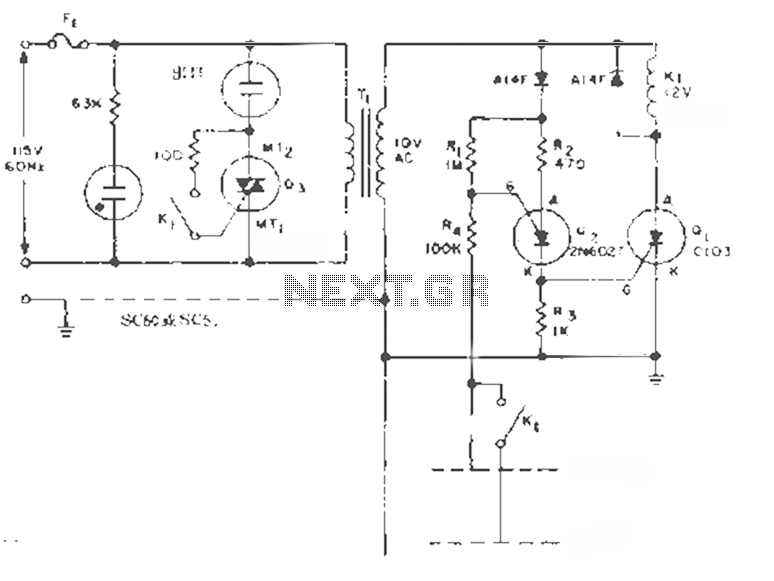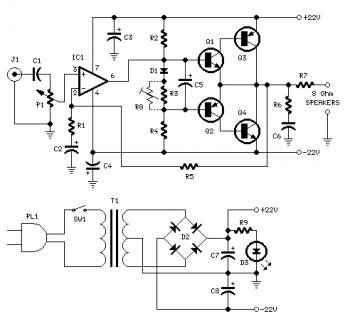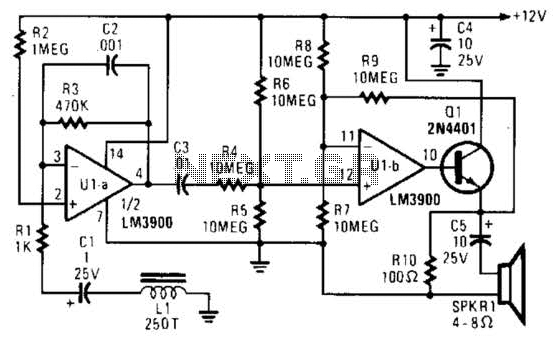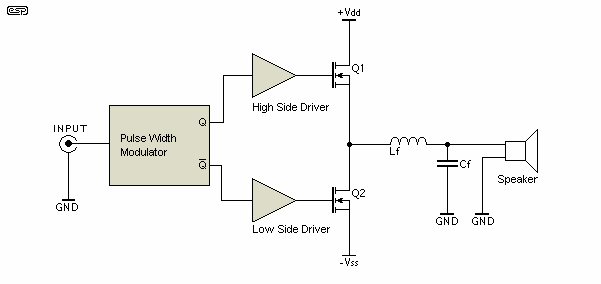
Musical Instrument Digital Interface (Midi) Receiver Circuit

The receiver photodiode SFH250 is utilized to convert optical data pulses at a rate of 32.5 Kbps into electrical signals. The buffer T2 transmits these signals to a cascade amplifier consisting of transistors T3 and T4, followed by an operational amplifier IC4, and finally buffered by IC5-f and IC5-e. Additionally, IC6 provides a 9 V supply for the circuit.
The circuit design incorporates the SFH250 photodiode, which is sensitive to light and is capable of detecting modulated optical signals. The photodiode's output is a small current proportional to the light intensity, which is then amplified for further processing. Buffer T2 serves a critical role in isolating the photodiode from the subsequent amplification stages, ensuring that the signal integrity is maintained while preventing loading effects.
The cascade amplifier, comprised of transistors T3 and T4, is configured to provide significant gain to the weak signals generated by the photodiode. This stage is essential for boosting the signal strength to a level suitable for the operational amplifier IC4, which is configured to further refine and amplify the signal. The operational amplifier may also incorporate filtering to remove any unwanted noise from the signal.
Following the operational amplifier, the buffered outputs from IC5-f and IC5-e are designed to drive subsequent stages or components, ensuring that the signal can be effectively utilized in downstream applications. The use of buffers helps maintain signal integrity and prevents any loading on the previous stages.
Power supply considerations are addressed by IC6, which provides a stable 9 V to the entire circuit. This voltage level is crucial for the proper operation of the amplifying components and ensures that the circuit functions reliably under varying load conditions. Overall, this schematic effectively converts optical data into usable electrical signals, ensuring high fidelity and performance in data transmission applications. Receiver photodiode SFH250 is used to convert optical data pulses at 32.5 Kb to electrical signals. Buffer T2 feeds the signals to cascade amplifier T3-T4, then to op amp IC4, and buffers IC5-f and IC5-e. IC6 supplies 9 V for the circuit.
The circuit design incorporates the SFH250 photodiode, which is sensitive to light and is capable of detecting modulated optical signals. The photodiode's output is a small current proportional to the light intensity, which is then amplified for further processing. Buffer T2 serves a critical role in isolating the photodiode from the subsequent amplification stages, ensuring that the signal integrity is maintained while preventing loading effects.
The cascade amplifier, comprised of transistors T3 and T4, is configured to provide significant gain to the weak signals generated by the photodiode. This stage is essential for boosting the signal strength to a level suitable for the operational amplifier IC4, which is configured to further refine and amplify the signal. The operational amplifier may also incorporate filtering to remove any unwanted noise from the signal.
Following the operational amplifier, the buffered outputs from IC5-f and IC5-e are designed to drive subsequent stages or components, ensuring that the signal can be effectively utilized in downstream applications. The use of buffers helps maintain signal integrity and prevents any loading on the previous stages.
Power supply considerations are addressed by IC6, which provides a stable 9 V to the entire circuit. This voltage level is crucial for the proper operation of the amplifying components and ensures that the circuit functions reliably under varying load conditions. Overall, this schematic effectively converts optical data into usable electrical signals, ensuring high fidelity and performance in data transmission applications. Receiver photodiode SFH250 is used to convert optical data pulses at 32.5 Kb to electrical signals. Buffer T2 feeds the signals to cascade amplifier T3-T4, then to op amp IC4, and buffers IC5-f and IC5-e. IC6 supplies 9 V for the circuit.





